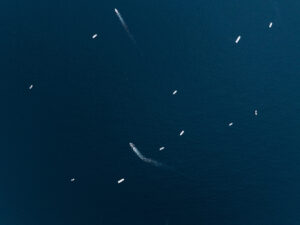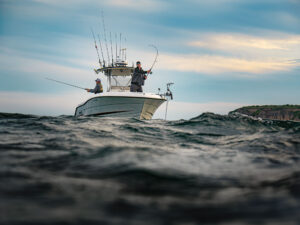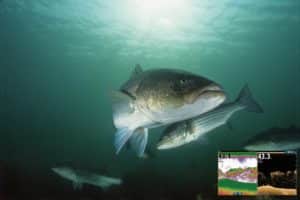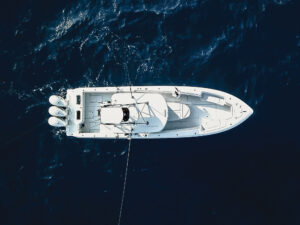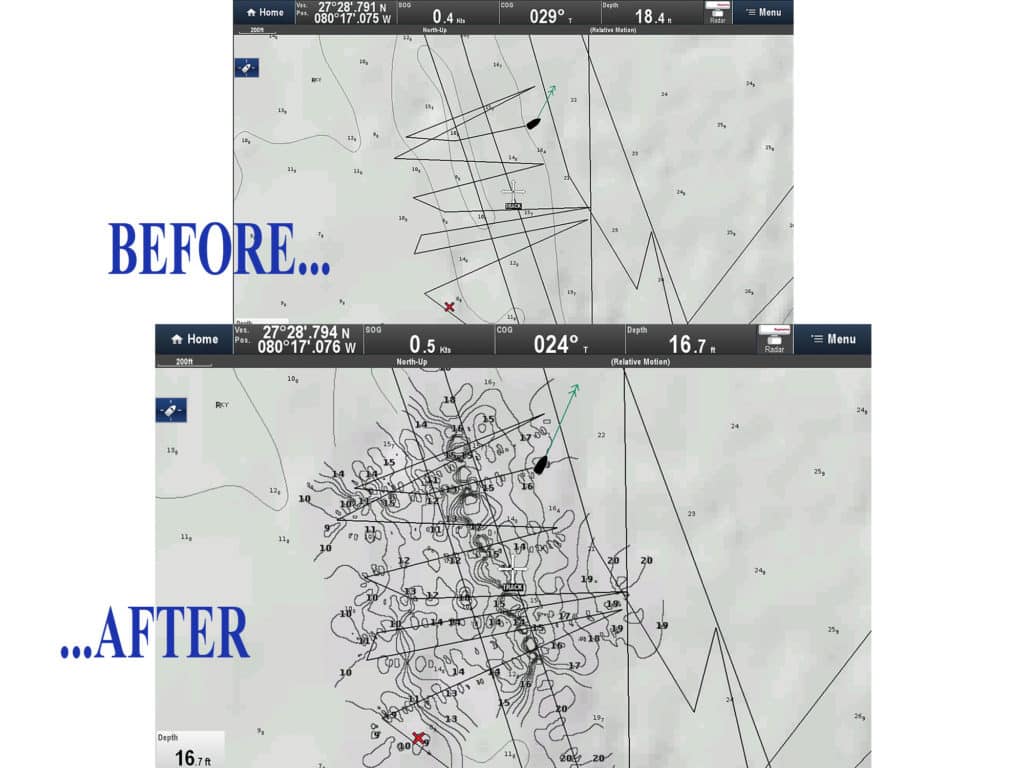
When fishing inshore, I usually keep a watchful eye on my sounder as well as my plotter’s charts. The structure I look for can be a subtle dip or channel in otherwise featureless sand.
For many years, I couldn’t depend on electronic charts to reveal much; shallow areas are only occasionally surveyed. Those charts were more like guidelines.
Then sonar-charting programs debuted in 2012 so anglers could log depth recordings from their regions and upload them to render customized and current charts. Now, at least four electronics companies or partnerships — Raymarine/Navionics, Garmin, Humminbird and recently Simrad/Navionics — offer instant, live, 1-foot high-definition bathymetry, which essentially marries the sounder to the plotter.
For inshore and offshore fishing, that means an instant depth picture of contours and structure on the fly — one that stays on your plotter as an adjustable transparent overlay.
Say a storm comes through and moves the sand around, creating all new bars and drop-offs? No problem. And what if an offshore wreck proves difficult to interpret on sonar? No problem. The detailed depth changes and sonar picture can appear side by side on the display.
Navionics Options
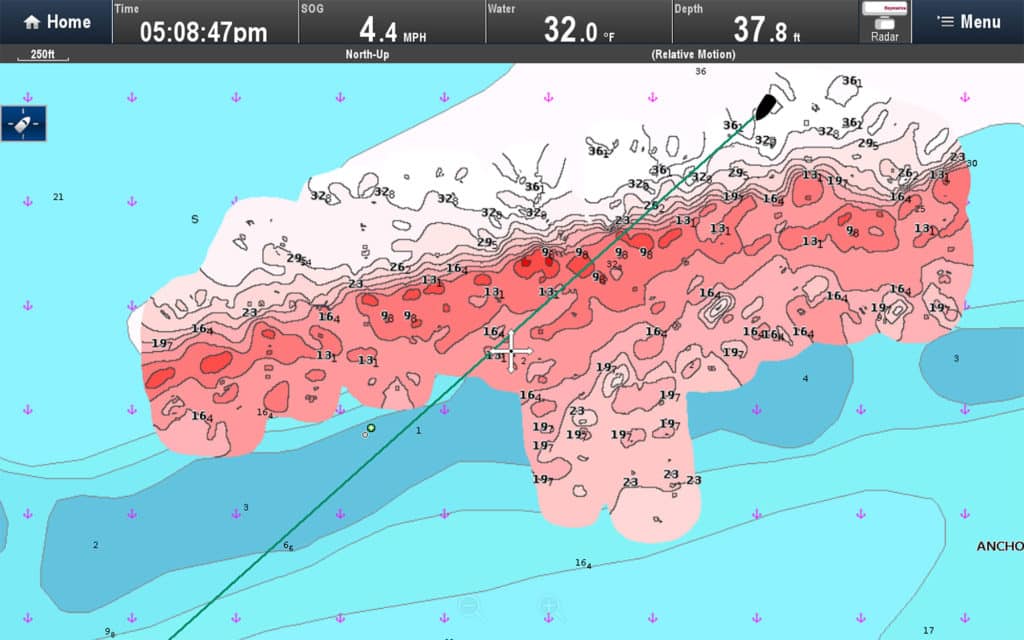
Live charting originated in summer 2014 with Navionics’ SonarChart Live in mobile app form and with Humminbird’s AutoChart Live, initially for ONIX multifunction displays. AutoChart Live currently works as a free feature with ONIX and Helix 9, 10 and 12 series units.
Part of Navionics’ popular Boating app, the SonarChart Live function originally operated via Wi-Fi with a Vexilar SonarPhone T-Box sounder, and later with Raymarine Dragonfly Pro and Wi-Fish units. As of May 2016, SonarChart Live became available for all Raymarine multifunction displays, from Dragonfly (via the app) through gS Series.
Simrad Intro
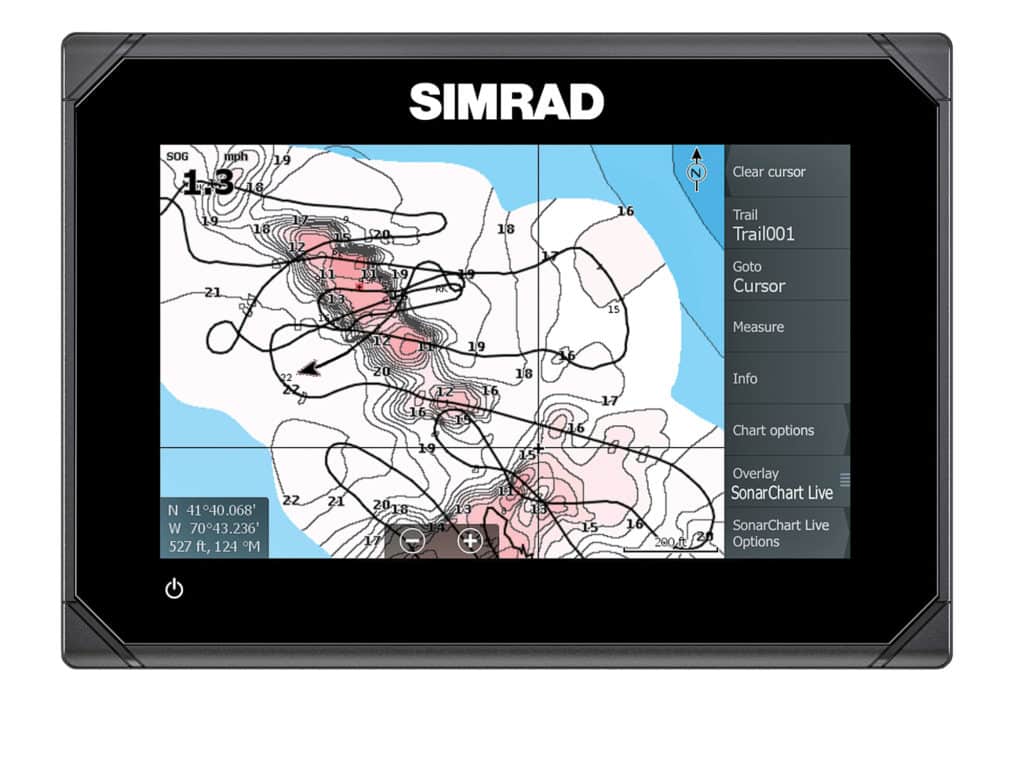
In recent weeks, SonarChart Live began pairing with Simrad GO, GO xse and NSS evo2 units as well as Lowrance HDS Gen3 MFDs via a free software update, which also includes Navionics’ Plotter Sync. (Navionics requires a $99 annual subscription to its Freshest Data club and at least one chart update every 12 months to establish eligibility to use SonarChart Live on Raymarine, Simrad and Lowrance units.)
“Originally, the sonar logging was always kind of in the background. You couldn’t do anything but contribute it to Navionics for a chart update,” says Raymarine marketing manager Jim McGowan. “From that anonymous collection to seeing the chart there in front of you with your own eyes is a whole other thing entirely.”
Making Adjustments
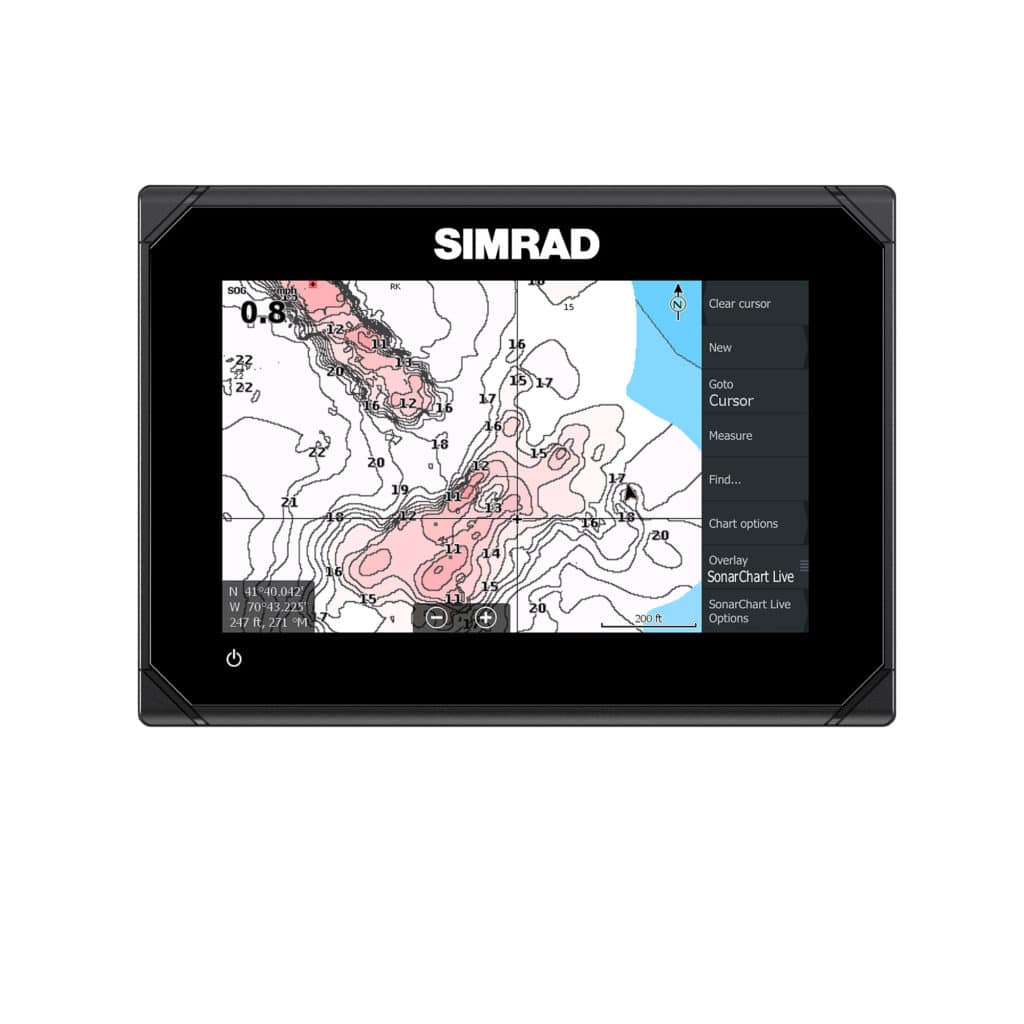
In shallow water, users can add depth shading so danger zones show up in red. Otherwise the background appears whitish, and its transparency can be adjusted to show the original chart information beneath. Navionics charts come with two chart-view choices: navigation and bathymetric. The logs that users generate apply to the bathymetric view.
For Raymarine, SonarChart Live files are stored on the Navionics map card so you can take your data to other compatible MFDs, McGowan says. The system actively manages the size of the files, updating them with the latest recorded data and overwriting older recordings. “It’s extremely unlikely that anyone would ever completely fill up the card with recordings,” he says.
If a Raymarine user wants to upload the sonar log and allow Navionics to combine it with other logs from the community, he can take his memory card home and plug it into his computer. Within about 72 hours, he’ll receive the updated SonarChart layer.
Proprietary Systems
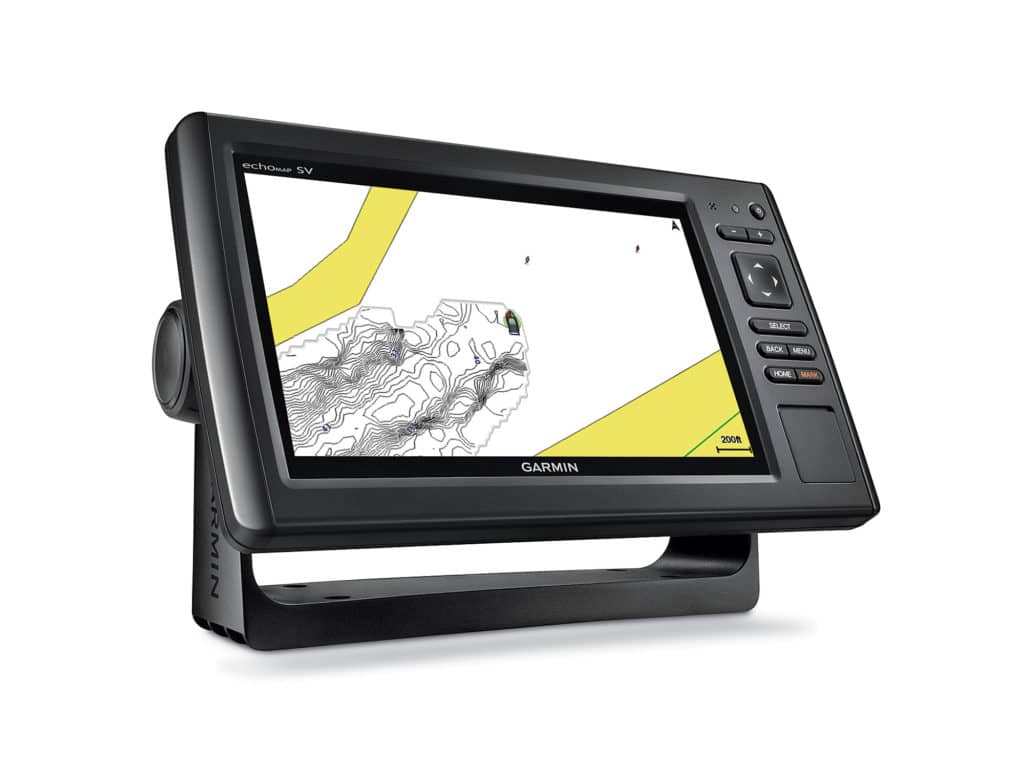
Garmin creates its own BlueChart software for use in its multifunction displays and chart plotters. Consequently, it introduced its own live charting via QuickDraw Contours in February 2016.
Garmin customers can use QuickDraw on echoMAP, echoMAP CHIRP and many GPSMAP units combined with any transducer. However, the company suggests using Panoptix all-seeing technology. “The better the transducer quality, the more detailed the map content can be,” says Carly Hysell, Garmin media-relations manager. “With Panoptix, you can store about 75 hours of sonar logs on a 2 GB card. If you record at an average speed of 10 mph, that’s about 9,000 acres.”
Community Sharing
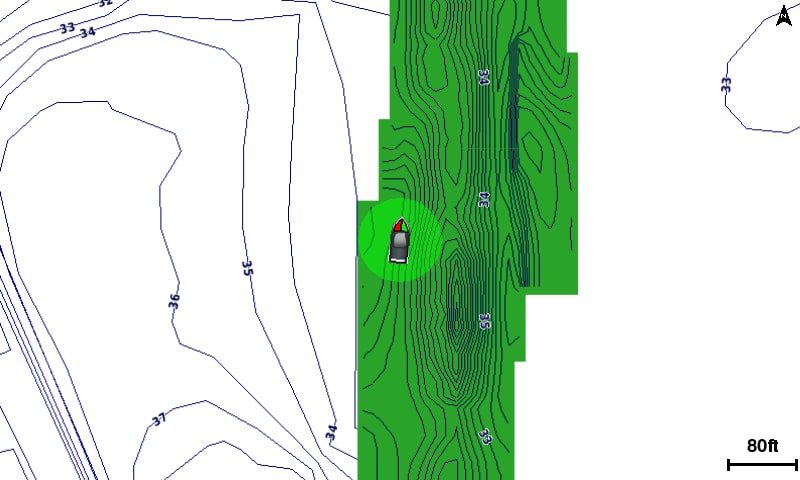
Anglers can create the instant logs right on their displays and keep them. They can also store them on any SD or microSD card or on a BlueChart g2 or g2 Vision card.
If they want to share sonar logs with others, they can upload the data using the QuickDraw Community (announced in July 2016) and then download an updated chart of the logged region. That combined user-generated data can be viewed on a Garmin plotter at the same time as the original personal log.
Pairing Possibilities
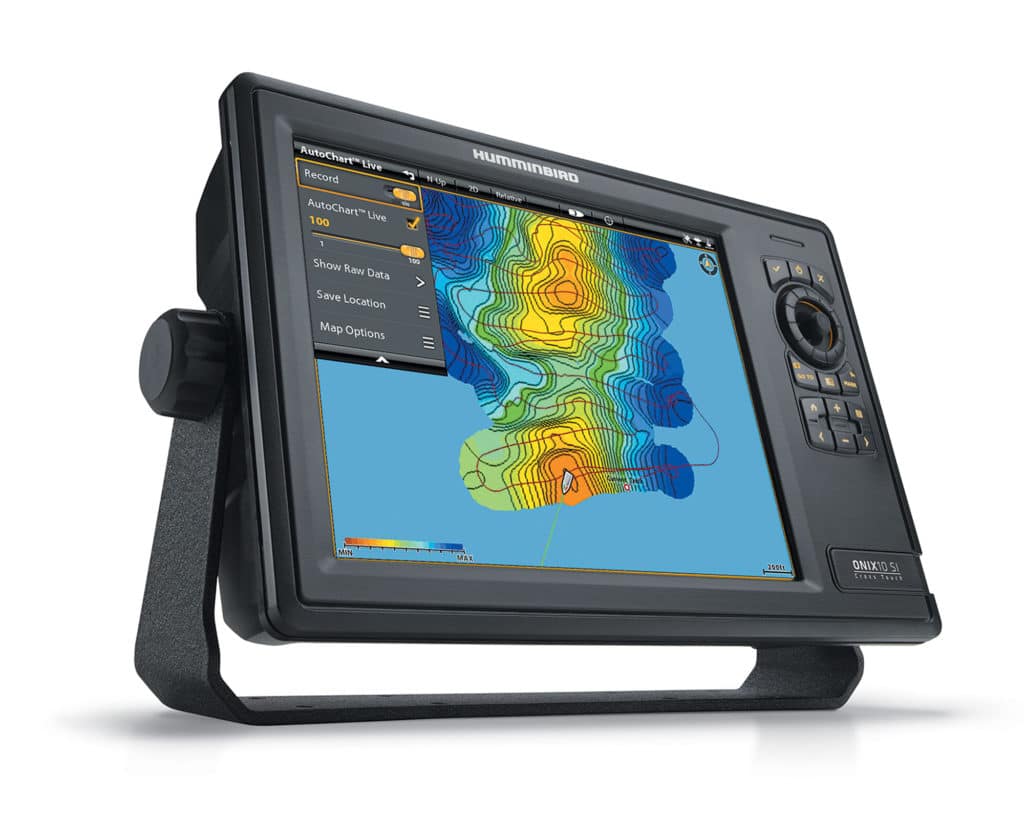
Humminbird’s AutoChart Live works with the company’s own LakeMaster charts, available for mostly freshwater locations, and with Navionics+ maps. The live charting is also compatible with i-Pilot Link, which pairs a Minn Kota trolling motor with a Humminbird display. With AutoChart Live on, the i-Pilot Link can tell the motor to troll the contour lines you’ve created.
Anglers have access to eight hours of recording time built into their MFDs, but they can purchase a Zero Lines SD card ($99.99) to export the sonar logs to the AutoChart PC program, and then manipulate, store or share their fishing charts.
Staying Live
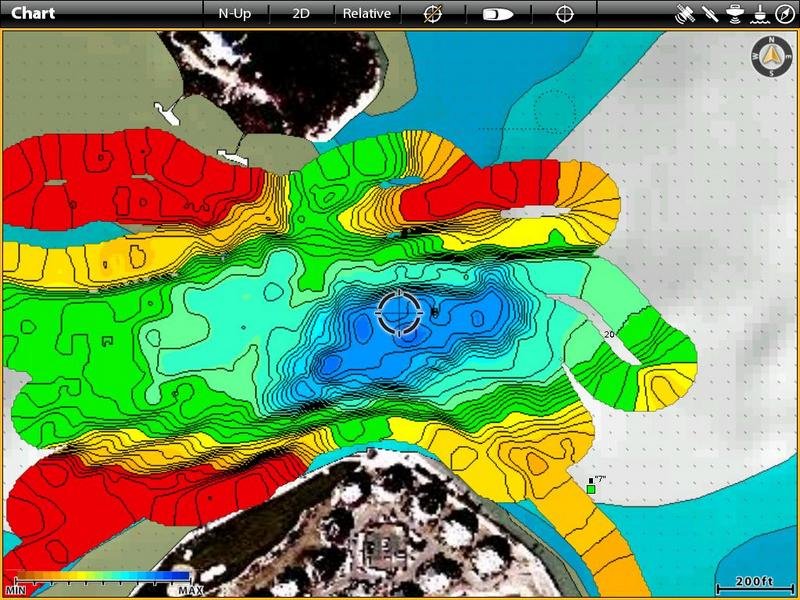
Furuno does not offer a free or low-cost live-charting option yet. However, if you purchase a Timezero Personal Bathymetric Generator ($500) and Timezero charting software ($1,250), you can build your own contour charts on the fly.
With the ever-changing nature of the sea, live charting makes perfect sense for saltwater anglers. “You’ve got to look at what NOAA’s reasons are for doing soundings: commercial shipping and boating. Those don’t necessarily overlap with good fishing grounds,” McGowan says, “particularly for guys fishing inshore. NOAA doesn’t have a reason to go in there. This is a way to get a lot of those places mapped for the first time ever.”
In other words: Live charting is yet another step toward finally seeing what’s down there, making fishing as close to predictable as it will ever be.

